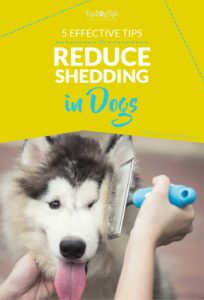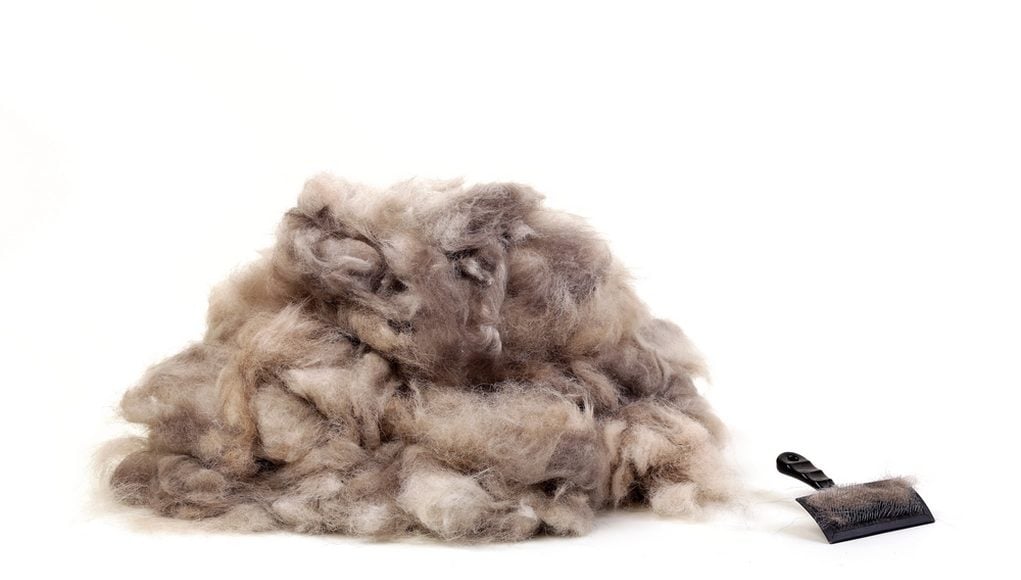You wake up in the morning and walk to your kitchen. Your dog's hairballs roll by like tumbleweeds from the Western movie you watched as a child.
If this sounds like your house, then you definitely need to learn how to reduce excessive shedding in dogs through grooming and providing the right diet for them.
Shedding is very natural in dogs, and all dogs shed.
Some shed less, some shed more, but they all come with this “problem.” However, there are things you can do to improve the situation and reduce the amount of dog hair you find around your home.
If you've got a shedder dog, the first thing you may need to change is how you are grooming your pooch.
A few preventative measures will reduce the amount of shed dog hair. Your dog may also enjoy it more than he likes you using a pet hair vacuum or broom.
Before you can start reducing shedding in your dog, you need to know what kind of coat your dog has. If your dog is like one of my mutts, he may have a combination coat type.
For dogs with combination coats, you may need more than one dog grooming tool, and it may take a few more steps to rid his coat of all of its loose fur.
Let's go over the most popular methods of getting rid of extra hair and what coats these tools work best with.
READ/SEE ALSO: How To Groom A Dog at Home by Yourself
5 Ways to Reduce Excessive Shedding in Dogs
1. Special Dog Brushes
The first and most important dog grooming tool that will impact your dog's shedding is a good brush. Choosing not the best one but the right one is vital.
The Furminator
This is a special dog grooming tool with teeth. Watch our Furminator review to see exactly how it works.
Basically, the end is a sharply jagged edge that you comb through your dog's fur. It is great for dogs with double coats.
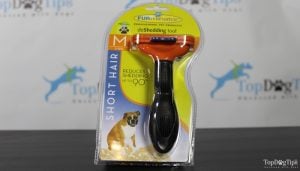
Double coats have a soft, down-like underlayer with longer, stiffer hair laying over the top.
My Australian Shepherd mix loves being groomed with the Furminator.
I would not recommend this for short hair breeds, though, as it may scratch their skin. However, it's great for reducing shedding on long-haired double-coated dogs.
Double Bristle Brush
A double-bristle dog brush works great for dogs with mixed coats. We use one on our mixed dog.
The Furminator is great for his back and sides that have the double coat. But on the rest of his body, we use the dual bristle brush.
These dog brushes get in all the way to the skin and comb through the layers. They have shorter bristles that smooth the top. Our dog loves it, and it leaves his coat soft and shiny.
Wire Brush
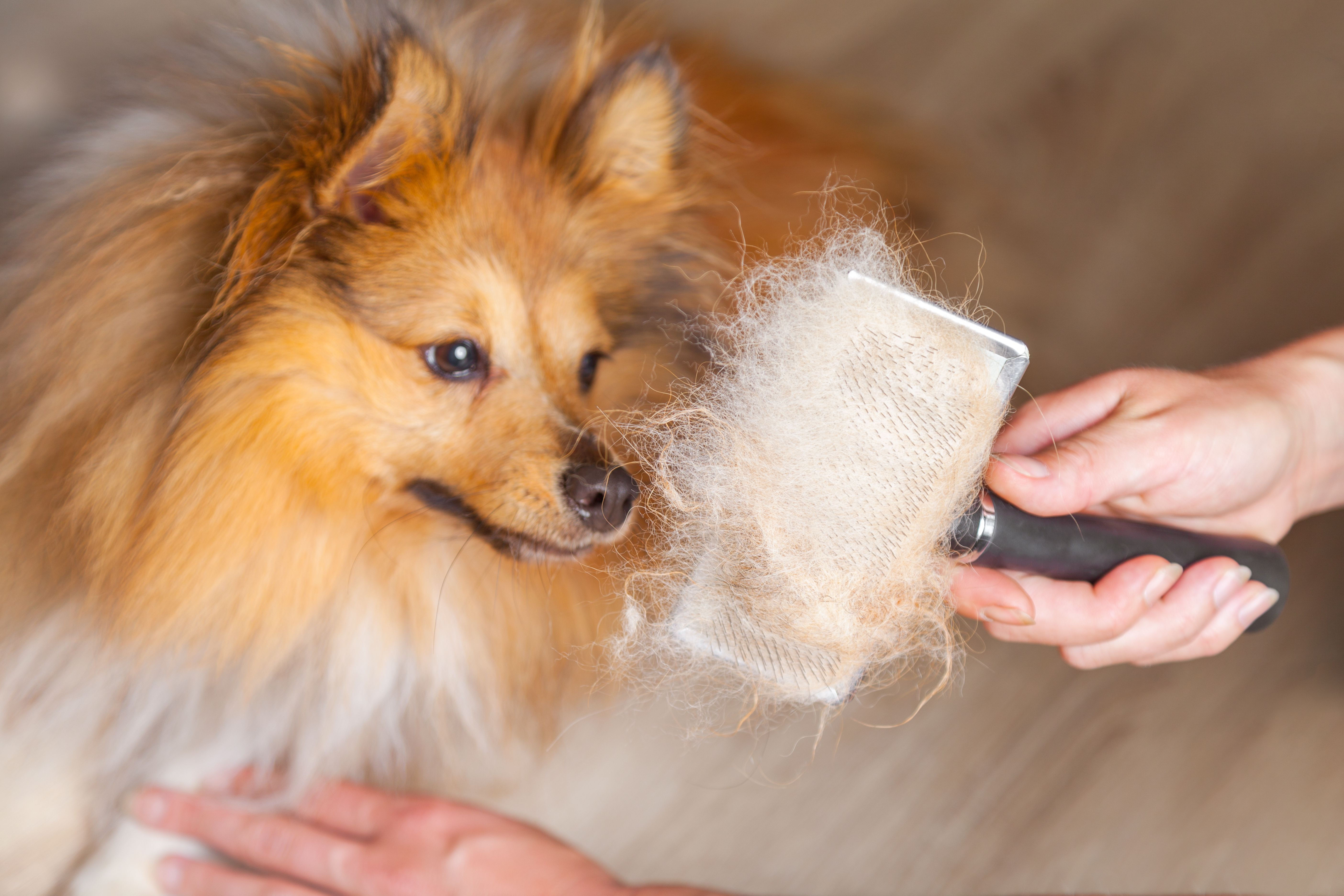
Wire brushes are one of the most popular grooming brushes and are good for dogs with thick, coarse dog hair.
They can really get in there to remove dead hair and mats.
Make sure you don't push too hard, though, as it can be uncomfortable going across your dog's skin.
This is more of a “working brush” than a “pamper brush.”
Soft Bristle Brush
On a short-haired dog, a soft brush is usually all you need.
These kinds of brushes are very gentle, so they also are good for older dogs or dogs with skin conditions.
They are effective at removing some hair, so you can even use it on your other fur babies to reduce shedding and offer a soothing treat.
WATCH THIS: How to Stop Dogs from Shedding (A Video Guide)
2. Specific Foods and Treats
Not all dog foods are made equal. But a healthy diet is necessary to keep your dog's coat healthy too.
For great hair that is stronger with less shedding, feed your dog food with vitamins, minerals, antioxidants, and Omega 6 and Omega 3 fatty acids, such as fish oil supplements that have been scientifically proven to improve dogs' coats and skin and potentially reduce shedding.
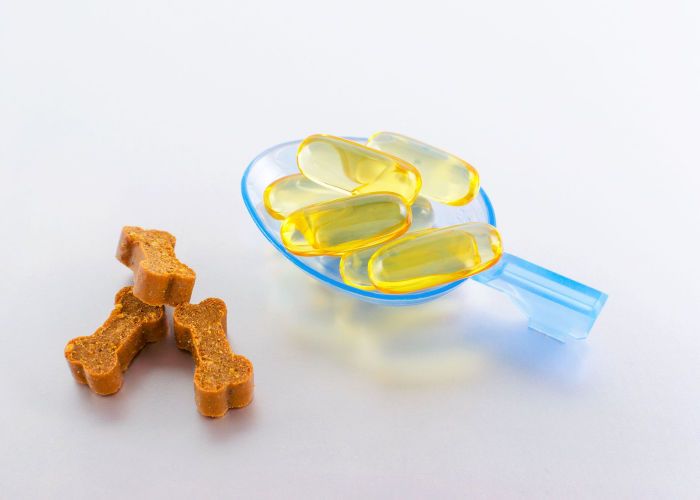
If you are unable to change the dog food brand, you can supplement your pet's diet with treats.
While it's not recommended to give a dog table scraps, you can feed Fido fresh foods to reduce dog shedding by the way of homemade dog food cooking (as long as you consult with your vet and make it a well-balanced meal).
You can find tons of homemade dog food recipes for a healthy diet with videos here.
Pick the ones that agree with your furry friend's digestive system, and I recommend working with your veterinarian or a canine nutritionist to find the best dog food and treats for your pup's needs.
3. Dog Supplements
There are many supplements available for your four-legged friend, just like they are for you.
If your Fido is receiving well-balanced food and snacks through commercial kibble, particularly top-rated brands, then he doesn't need supplements in most cases.
Picking dog supplements can be tricky, but they're essential when feeding homemade meals.
Too much of a good thing will be bad for the pet, so always check with your vet before giving your canine any additional vitamins, minerals, or herbal supplements.
4. Shampoos to Reduce Shedding
Non-drying Shampoos are the best choice to reduce excessive shedding in dogs.
Dry hair breaks easily. Something non-drying or moisturizing will help prevent breakage in your canine's fur and reduce (but not prevent) hair.
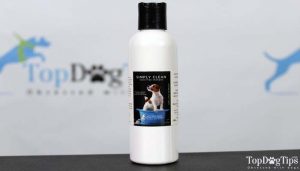
Samantha has done a dog shampoo round-up where she tested and compared all the types. You can also use hypoallergenic dog shampoos to improve the condition of your dog's skin.
Bad skin can equal hair loss. Studies have proven that vets now recommend oatmeal and aloe shampoos, which are great for the dog's skin and hair. These are often part of anti-bacterial/medicinal pet shampoos for dogs.
I know you've seen the commercials for human hair care featuring luxurious hair with a vitamin bursting on it. Vitamin-infused shampoo works for dog hair as well (provided it's safe). Just never use human shampoo on a dog. It is much too harsh for pets' skin.
Of course, you can also make your own homemade dog shampoo that's going to have only the ingredients you choose specifically for your dog. Check out the DIY shampoo how-to video, where Samantha walks you through the process.
Almost as important as what dog shampoo to use is the knowledge that dogs don't typically need frequent baths unless recommended for a particular skin condition.
Our vet recommends bathing a dog once a month, and so do many professional dog groomers. Bathing more often can lead to dry skin and brittle hair.
Make sure you know how to do it right and bathe a dog effectively yet not scare him off.
RELATED: 5 Best Medicated Dog Shampoos
5. Address Your Dog's Skin Conditions Directly
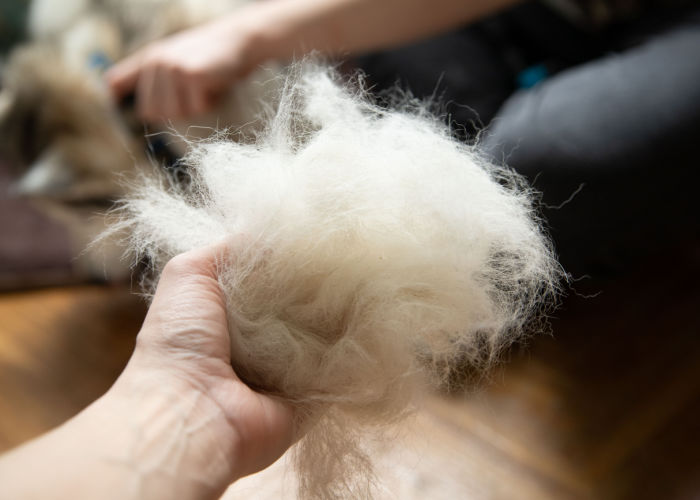
Certain skin conditions will increase shedding in dogs and make them lose hair more than usual.
In those cases, regular ways to reduce excessive shedding in dogs will unlikely work, and these dog skin conditions must be addressed directly under the supervision of your veterinarian. Here are the top conditions that cause shedding.
Eczema
If your dog has eczema (something that looks like this), it can cause dry, itchy skin, skin sores, and hair loss.
Dogs with eczema need an all-natural shampoo that is easy on the skin.
When it comes to fleas, not all options are good for dogs with eczema. For example, it's always better to use flea pills and chews and skip the topical flea medications too.
Flea Dermatitis
Some dogs are allergic to fleas. They get rashes similar to the ones caused by eczema and other allergies. Make sure that you are using a good flea treatment.
If you treat your dog for fleas but still see them on your dog (or around the house), it is time to go to the vet and consider clearing the house of fleas.
The issue could be more serious. Here's a video on how to get rid of fleas on your dog and inside your home.
Other Conditions
There are lots of other conditions that can cause hair loss in dogs. Mange, grass allergy, and allergies are just a few of the most common skin conditions in dogs.
If your dog is losing fur in patches or shedding more than usual, you need to see your vet. A steroid shot or other treatment may be necessary, as well as a good diet plan.
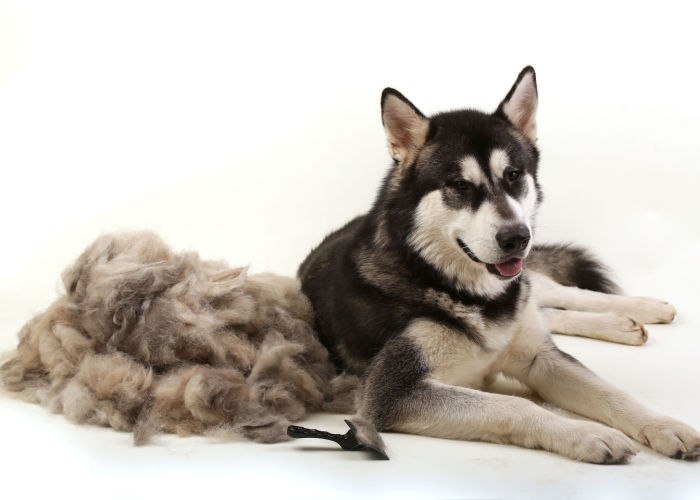
Reduce Dog Shedding – Final Thoughts
Dogs shed seasonally. That's part of their natural process. But sometimes, we need to intervene to control dog shedding, especially if it becomes unnatural.
The important thing to remember is if the problem becomes worse or is bothersome, always go ahead and speak to your veterinarian before embarking on a journey of Google research and trying every potential dog supplies product out there.
It's okay to try natural remedies to reduce excessive shedding in dogs, but pets and people have allergies to natural things as well.
Also, if your furry family member has parasites, he needs to be treated before they spread to other pets or people in the house.
Yes, dogs shed. But that doesn't mean you can't do anything to help your dog maintain healthy hair growth and save you the trouble of constantly vacuuming loose hair.
READ NEXT: Deshedding A Dog – 7 Best Methods
